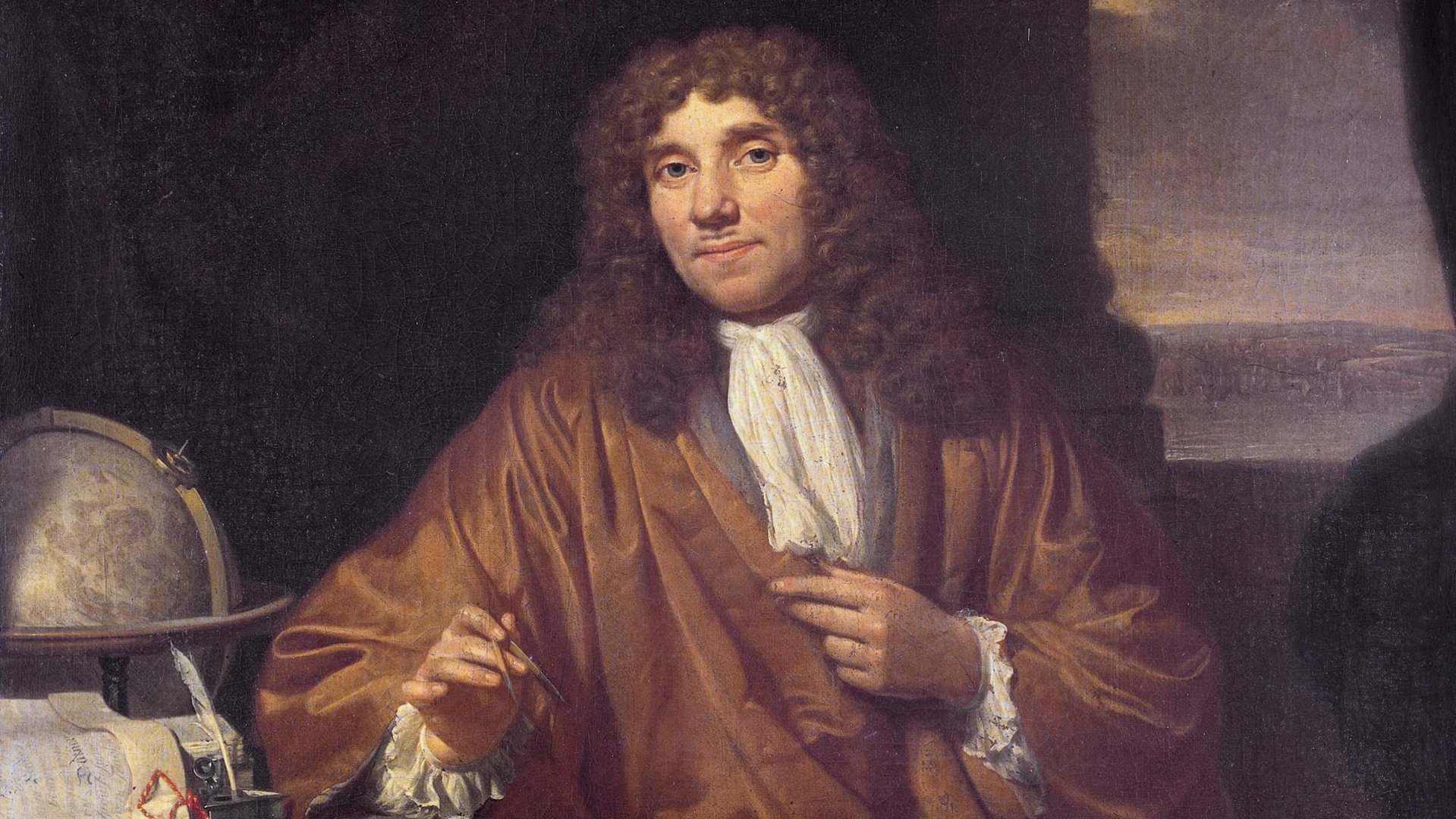Antoni van Leeuwenhoek (1632-1723), a cloth trader from Delft, is the founding father of microbiology. He used home-made microscopes to discover the invisible world of micro-organisms.
Antoni van Leeuwenhoek (1632-1723), a cloth trader from Delft, is the founding father of microbiology. He used home-made microscopes to discover the invisible world of micro-organisms.
Glass-blowing
In his work as a trader in cloth, Van Leeuwenhoek used magnifying glasses to find irregularities in the cotton. He became interested in producing the lenses, blowing the glass and grinding it down himself. His curiosity in the natural world led him to use the lenses to look at other things. In 1674, he used a home-made microscope to become the first person to discover microbes. He described seeing “animalcules” in a drop of water from the murky Berkelse meer (lake). These were in fact green algae and wheel animals (rotifers). He discovered red blood cells and bacteria not long afterwards (in 1676).
Chastity
Van Leeuwenhoek placed his specimens on a pin under the lens when making his discoveries. He set up a new microscope for each specimen. In the end, he had about five hundred of them. Van Leeuwenhoek is also known for his drawings and descriptions of (human) sperm cells. He was proud of his chastity and took care to note that these observations were made “without abusing himself”.
Unfortunately, only a few of the home-made microscopes of Van Leeuwenhoek still exist. A replica of one is on display in Micropia.

